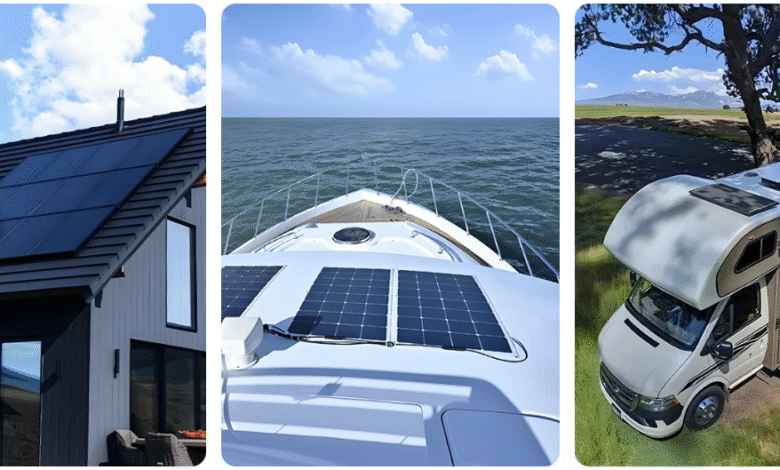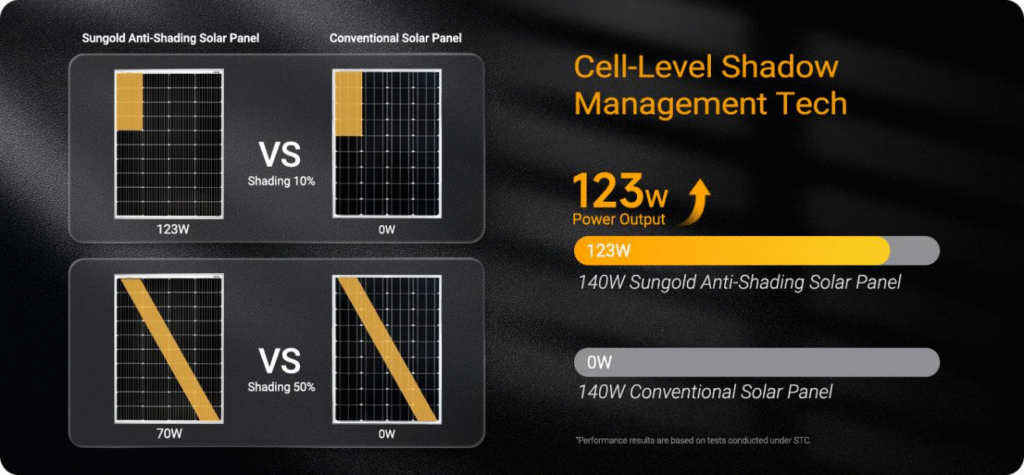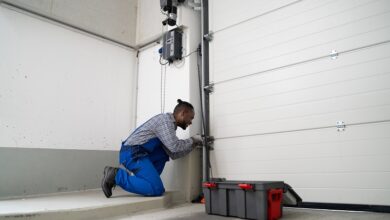Solving the Hidden Problem in Off-Grid Solar Systems: How to Beat the Shade

Living off-grid has never been more appealing — energy independence, reduced utility bills, and the freedom to live where you choose. But many users encounter a frustrating truth: even the most advanced off grid solar system can underperform in shaded environments. Whether it’s a tree-lined cabin, an RV under a canopy, or a city balcony with railings, partial shading remains a silent killer of solar efficiency.
The Unexpected Villain in Off-Grid Power: Shadows
Solar panels thrive on direct sunlight. But what happens when just one section of a panel is shaded — by a leaf, a railing, or a passing cloud? In conventional systems, energy output can plummet, sometimes to zero. Worse yet, shaded cells may overheat, leading to what’s known as the “hotspot effect” — a major cause of long-term panel degradation and failure.
For anyone depending on solar as a primary power source, this isn’t just a technical inconvenience. It’s a dealbreaker.
Four Common Scenarios Where Off-Grid Solar Falls Short
Let’s break down the most common pain points experienced in the field:
1. RV Roofs: Sunlight That Never Sits Still
RV dwellers often park under partial cover for shade — ironically the very thing that can disable their solar setup. As the sun shifts throughout the day, solar panels endure inconsistent light and partial shading that can lead to severe energy drops just when power is needed most.
2. Balconies: Urban Living Meets Solar Limits
Many urbanites experiment with off-grid panels on apartment balconies. The challenge? Railings cast predictable but hard-to-avoid shadows during peak hours, undercutting energy production when demand (like charging devices) is highest.
3. Residential Rooftops: Beauty vs. Function
Chimneys, vents, and nearby trees add architectural charm but introduce irregular shadows across panels. Unlike full solar outages, these partial interruptions are less obvious — and harder to fix without advanced technology.
4. Public Installations: Inconsistent Output in Shared Spaces
In parks, transport stations, and tourist hubs, solar units often suffer from intermittent shade from structures, trees, or heavy foot traffic. Unstable power output affects everything from lighting to charging stations, requiring frequent maintenance and oversight.
Can Technology Fix the Shade Problem?
Newer solar solutions are addressing this issue directly by redesigning how panels respond to partial shading. One such advancement is cell-level shadow management technology, which allows each solar cell to react independently to light changes. This means even if a few cells are shaded, the rest continue operating efficiently — reducing hotspot formation and preserving power output.
An example of this innovation in action can be seen in panels like the Sungold PA219, which integrate smart current routing to maintain energy flow even when parts of the panel are obstructed. These types of panels don’t eliminate the need for smart panel placement — but they offer crucial performance advantages when ideal conditions aren’t an option.

What to Look for in a Shade-Resistant Off-Grid Panel
When evaluating panels for shaded or mixed-light environments, consider:
- Independent cell response (to avoid total power loss)
- Integrated bypass circuitry (to prevent hotspot damage)
- High efficiency rating (22%+)
- Durability and lightweight construction (especially for mobile setups)
These traits help ensure consistent performance whether you’re parked in the woods or mounted on a rooftop with occasional tree cover.
Final Thoughts
Shading is an inevitable challenge for any off-grid solar setup — but it doesn’t have to cripple your energy independence. By choosing panels that are engineered to adapt, users can avoid the pitfalls of power drops and system wear, especially in real-world environments where perfect sun exposure is rare.
If you’re planning or upgrading an off grid solar system, especially for mobile or partially shaded conditions, exploring next-gen panel designs may be your smartest investment yet.




